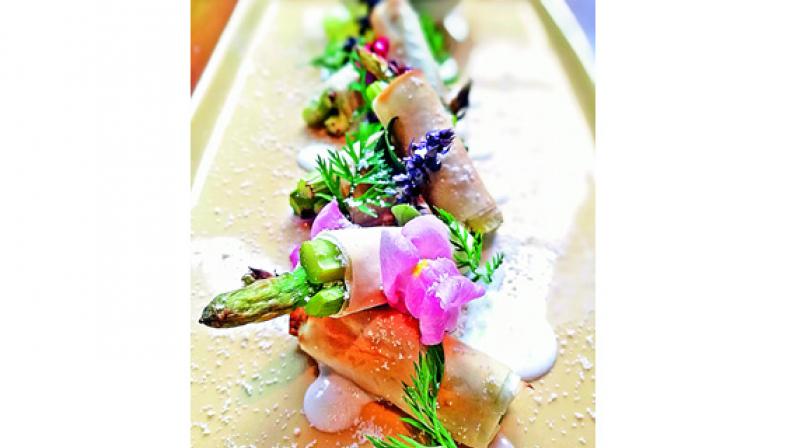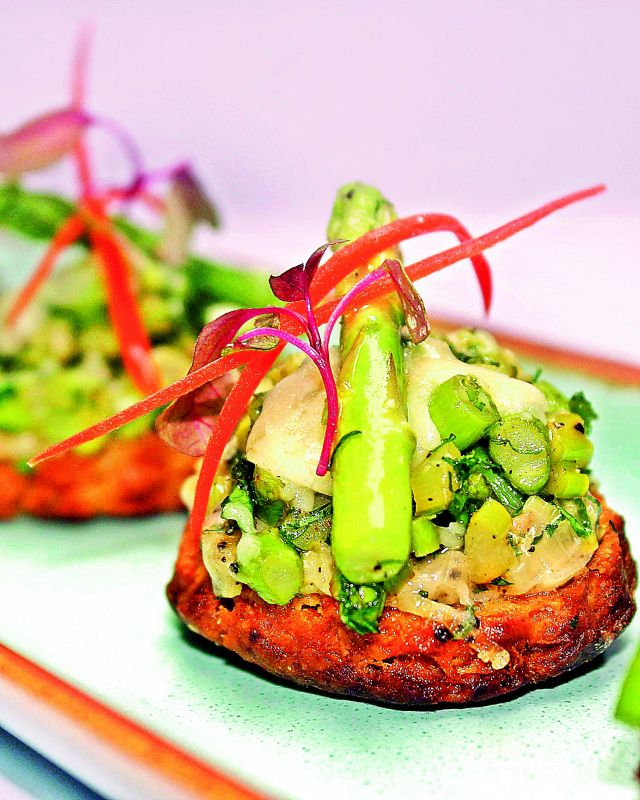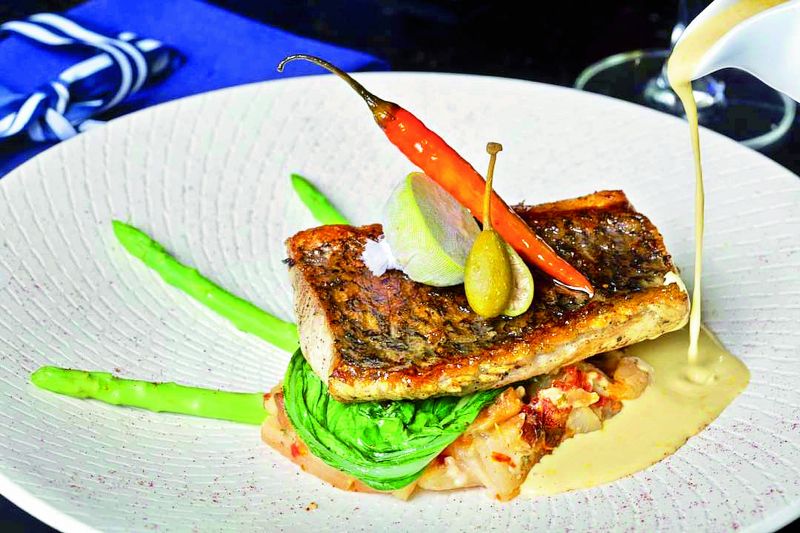Amazing asparagus

Often viewed as a “western exotic vegetable”, the asparagus has intimidated Indian cooks and was perceived as “fancy restaurant food” until recently. However, with a deeper understanding of culinary trends and greater availability, both home cooks and chefs are relying on this veggie that is not just delicious, but a powerhouse of nutrients as well.
ABOUT ASPARAGUS
Asparagus is primarily grown during spring and available in three colours round the year viz: Green — presence of chlorophyll, white — grown in the dark and absence of chlorophyll, and purple — high level of antioxidants in the stalks and sweeter in taste.
SELECTION AND STORAGE
Selecting asparagus can be tricky at times as these are stalky vegetables which need to be stored and handled with care. “We divide the vegetable into two parts for checking its quality and freshness — the spear (the unopened bud-like structure which forms the upper half of the vegetable) and the stalk (the lower half of the vegetable adjoining the spear),” suggests Chef Jerson Fernandes, Executive Chef Jeon, Hotel Sea Princess, Mumbai.
Spears — Considered the head of the vegetable. Should always be closed tightly like a flower bud and deeply coloured. The size of the spear doesn’t necessarily indicate the freshness or quality. Rather, look for a dark green or purple tinge on the spears which is a good indication of great quality. If the tips are yellowish or dried out, the asparagus is too old. The spears should always be straight and non-bendable. It should be brittle and must snap when you try to bend it too much.
Stalks — Considered the tail of the vegetable. Check for firmness of stalks and non-bended stalks. It should be moist, roundish and plump without cracks or cavities in it. There should be no blemishes, black spots or signs of dryness. If it has a woody appeal, it means it is old. Thinner stalks are more flavourful and tender than thicker stalks. To store, wrap in a plastic bag and refrigerate. If you won’t be using it for many days, then cut one inch of the stalk and place it in a glass jar with atleast two inches of the stalks immersed in water. Change the water everyday. You should never freeze asparagus as it wilts after thawing and loses its texture and flavour.
COOKING TECHNIQUES
After trimming and cooking asparagus, remember it loses half its weight. Green and white asparagus are best to be baked, grilled or steamed with salt and pepper. Since they are delicate vegetables, do not try to over-marinate it with lot of herbs and spices. The stalks can be pureed and used in soups and sauces whereas the spears are always used for garnishing salads and appetisers. Purple asparagus being the sweetest of the three is always used in desserts or salads for its semi-strong flavours. “I avoid directly frying asparagus. Being a delicate vegetable, it loses it firmness, flavour and texture when exposed to higher temperatures. If used in fried items, it has to be used in the form of a patty or cutlet to avoid direct contact with hot oil. It just takes eight to 10 minutes to be steamed or else five to seven minutes on a griller,” says Chef Jerson.
HEALTH BENEFITS OF ASPARAGUS
“It is a great source of fiber and rich in Vitamin A, C, E and K. One can find traces of the mineral chromium that enhances the ability to transport glucose. Additionally it helps fight cancer and helps boost brain energy,” says Celebrity Nutritionist and Dietician Manisha Mehta.
ASPARAGUS FLAT BREAD — RECIPE COURTESY, CHEF JERSON FERNANDES
½kg flour
10 gm salt
250 gm butter
15 nos asparagus
12 nos mushrooms
12 nos cherry tomato
100 ml olive oil
1 tbsp fresh oregano
7-8 leaves fresh basil
Salt and pepper to taste
Method
Make flat bread by kneading flour, salt and butter.
Rest the dough for an hour, then roll into desired shape and chill.
Once chilled, top with sautéed mushrooms, tomatoes and blanched asparagus.
Sprinkle with herbs, finely chopped garlic and olive oil.
Bake at 180 degrees C for 15 minutes.
SEASONAL SALAD WITH ASPARAGUS — RECIPE COURTESY, MINISTRY OF SALADS, MUMBAI
150 gm salad leaves
25-30 gm blanched asparagus
50 gm cooked puy lentils
50 gm fresh lychee
25 gm cooked green beans
20 gm feta cheese
20 gm cherry tomato
Dressing: A basic vinaigrette or lemon herb dressing.
Mix all the above together and toss with a dressing of your choice.
BARRAMUNDI WITH ASPARAGUS
180 gm fillet with skin
3 nos asparagus
1 bunch (approx. 20 gm) bok choy (grilled)
50 gm lyonnaise potato
Method :
Add oil to the pan, pan-sear Barramundi until golden brown.
On the side, grill bok choy with olive oil, salt and pepper and blanch
asparagus.
Assemble the dish: Plate together Barramundi with lyonnaise
potatoes, grilled bok choy and blanched
asparagus.
Sauce on side (per portion):
10 gm pureed mussel, 15 gm Parmesan cheese, 15 gm cream, saffron and seasoning for taste.
Mix the above together and serve.
Recipe courtesy Estela Restaurant, Mumbai




